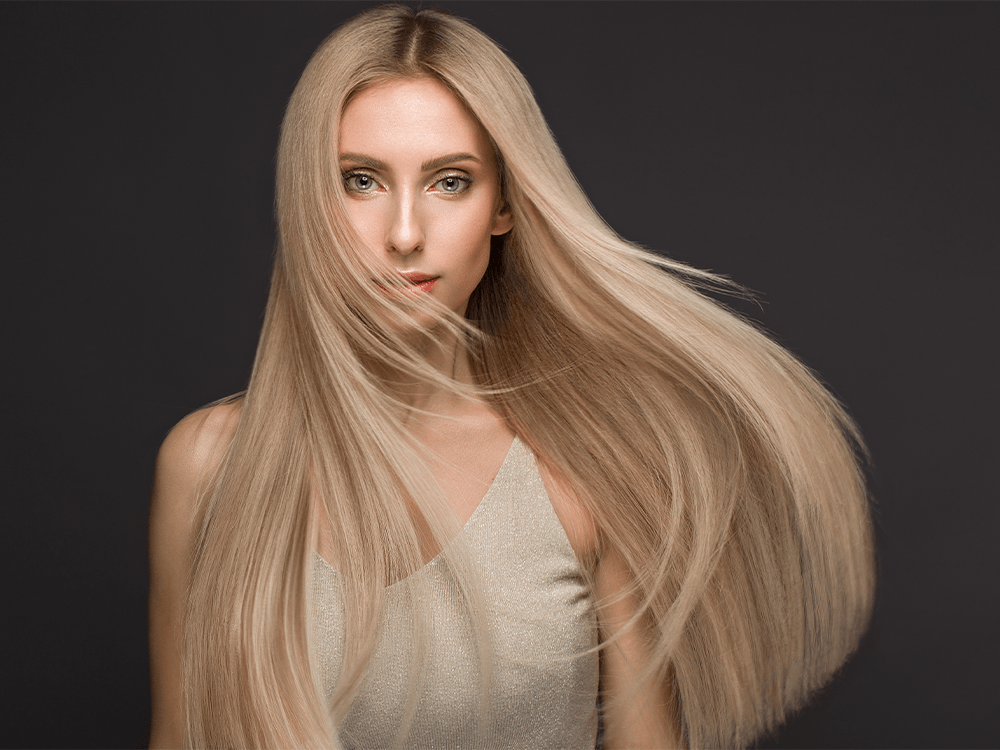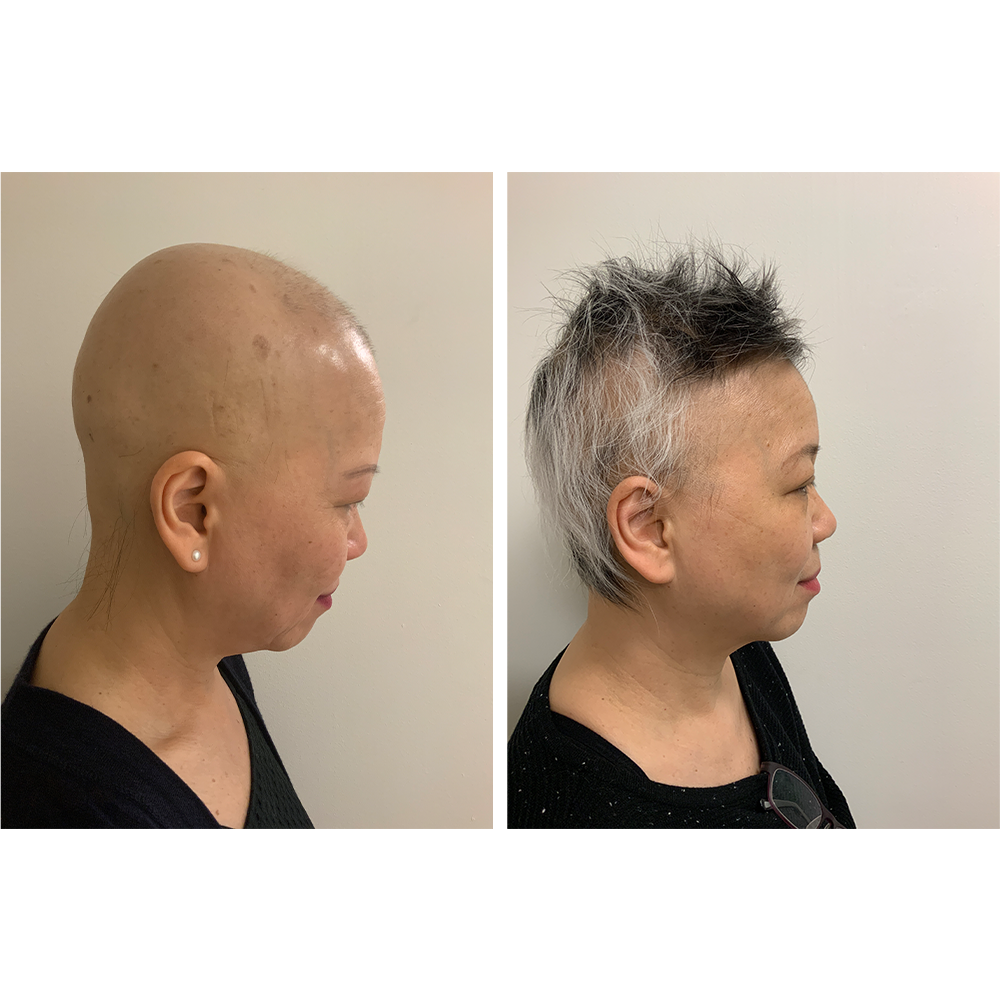
These Next-Level Combination Treatments Deliver Transformative Hair Growth
Male and female pattern hair loss, also known as androgenic alopecia, affects an estimated 50 million men and 30 million women in the U.S. alone. Despite its prominence, the issue continues to be a largely secretive concern that many sufferers opt to cover up, ignore or put off treating. Today, there are multiple hair regrowth modalities available that help hair follicles get back on track, and according to our experts, reviving thinning or balding hair is not a one-and-done approach. Here, we explore the cutting-edge combinations that are helping millions reclaim their crowns.
Nonsurgical Hair Regrowth Treatments
For most patients suffering from hair loss, one, two, three, and sometimes even four of these nonsurgicaloptions can be combined to restore lost strands.
- Over-the-counter topical minoxidil
- Prescription oral finasteride
- Platelet-rich plasma (PRP) injections
- Light and laser therapy treatments
“It requires a holistic approach, aligning and matching the treatment plan to the patient’s age and current stage of hair loss,” explains Beverly Hills, CA hair restoration specialist Dr. Craig Ziering. “Typical hair regrowth plans include a multimodality plan with a combination of therapies, sometimes including surgical and nonsurgical.”
Winning Combinations
Because hair thinning or genetic pattern baldness is a progressive health disorder, the treatment needs to be managed across the patient’s lifetime. “To be most effective, we need to treat the condition from a 360-degree perspective by bringing the scalp to optimal health to create an overall healthy environment for regrowth,” notes Dr. Ziering.
HydraFacial Keravive Scalp Treatment
To cleanse and nourish the scalp to promote what Dr. Ziering calls, “fuller, denser, healthier-looking hair,” HydraFacial Keravive combines HydraFacial’s deep-treatment power with Keravive’s proprietary serum for an exfoliating, hydrating experience that is best described as a facial for the scalp.
“This is ideal for someone who needs a scalp reset,” says trichologist Shab Reslan. “Be it flaky buildup, excessive oil, or dryness and irritation, this three-step treatment deep-cleanses the scalp and removes all buildup caused by natural oils, the environment, styling products and water residue. It then nourishes follicles with vitamin B5, followed by hair growth–stimulating ingredients like arginine. It’s like microdermabrasion for the scalp, but packed with nutrients specifically for scalp and hair health.”
Lasers + Topicals
When it comes to a follicle resurrection, laser therapy can act like plant LED incubators for follicles that need a little push to start. The laser energy triggers the hair to grow faster and stronger than it could on its own. “The lasers stimulate the cells in the follicle and increase nutrient intake to help grow better hair and extend the life of the follicle itself,” explains Reslan. When adding topicals to the equation, its like adding a bit of Miracle-Gro on top.
New York dermatologist Doris Day, MD has seen impressive hair growth results from the Fotona Dynamis laser in combination with topicals and other in-office treatments. “The laser uses photobiomodulation, a form of gentle deep heat, to stimulate the stem cells of dormant hair follicles. The light energy penetrates tissue where it interacts with chromophores and induces a complex set of reactions that increase circulation, reduce inflammation and help restore normal cellular function. The light may also affects cell signaling, essentially instructing the cells to ‘wake up!’ I combine laser treatments with my minoxidil-free Rapid Hair Regrowth Serum ($95) that uses natural actives, as well as supplements like Nutrafol ($79).”
“While laser therapy is commonly prescribed, you want to make sure that your provider is using a high-quality FDA-cleared device,” says Dr. Ziering, who employs the KeraLase treatment at his practice. During the treatment, microchannels are created using the LaseMD nonablative laser and then the KeraFactor Treatment Serum—made of synthetic growth factors and skin proteins—is applied. “The microchannels allow the serum to more easily absorb into the scalp,” he explains.

Expert Analysis
“Understanding root causes such as genetics, lifestyle, diet, styling habits, and health and medical histories is the most necessary step to address any scalp and hair concerns,” says trichologist Bridgette Hill. Wanting to make healthy hair more accessible, Hill created a digital platform with mobile app capabilities called Root Cause Scalp Analysis that allows users to get a one-on-one diagnosis and treatment plan to target issues like hair loss, eczema, psoriasis, plaque seborrheic dermatitis, and lichen planopilaris. Users begin with a thorough questionnaire to determine their lifestyle, concerns, hair habits and more, followed by an opportunity to upload photos of their scalp and hair concerns. “It is important to recognize how the practices and behaviors we choose for our bodies, minds and spirits are equally important as the type of hair products, styles and techniques we use,” notes Hill.
PRP + Minoxidil
Although not yet approved by the FDA, platelet-rich plasma therapy has been a favorite nonsurgical treatment with hair regrowth experts for years, as some studies have shown it can accelerate a faster transition to the anagen phase of the hair cycle, back from the resting and transitional phases. “When starting PRP injections,I see patients once a month. After three months, I transition them to an every-three-months regimen for the remainder of the first year, and then I try to space it out further,” explains Campbell, CA dermatologist Amelia Hausauer, MD. “This schedule is based on a clinical trial I ran where we looked at different frequencies of treatment to get optimal hair growth, and this one resulted in an average 30-percent regrowth and a 30-percent increase in hair shaft thickness.”

To maximize results, Dr. Hausauer often combines off-label PRP injections with either minoxidil, prescription spironolactone for premenopausal women or finasteride for post-menopausal women. “One study looked at the combination of PRP plus minoxidil versus PRP plus finasteride, and found that the PRP and minoxidil actually outperformed the other. So, I really try and get patients at least doing something like that as part of a home regimen.”
At-Home Light Therapy + Supplements
Using the same growth principles as laser therapy, low-level laser therapy devices can stimulate follicles and help treat hair loss on the patient’s own time, in the comfort of their home. “In my research, I’ve found some standout brands to be Theradome ($595), Capillus ($799) and Laser Cap,” explains Dr. Day.
For those with darker, coarser hair, Dr. Hausauer says treatments may not work as well as they do for those with finer, thinner, lighter hair. “The light has to get down to the scalp, so if you have really dark, thick hair, the comb, cap or headband light may sit on top and have a harder time effectively penetrating down to the skin.”
To up the ante at-home, hair-loss supplements can also help boost results. “I typically recommend Viviscal ($40/month) and Nutrafol, which are both made from marine protein,” adds Dr. Hausauer. “If you want to go the holistic route or can’t tolerate prescription therapies, light therapy and supplements can be a great first step.”
Looking for the best hair growth products to use at home? Our list hits all the essentials.



